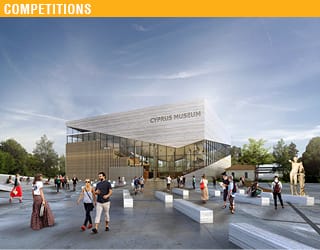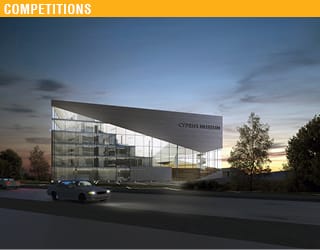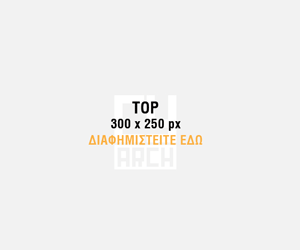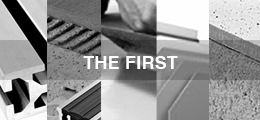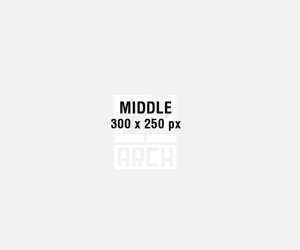The New Cyprus Museum Competition Entry
Architects for Urbanity
Team: Irgen Salianji, Marina Kounavi, Karolina Szóstkiewicz, Roxana Aron, Eugenio Cardoso
2017 | Proposal | 16.000 sq.m
Nicosia
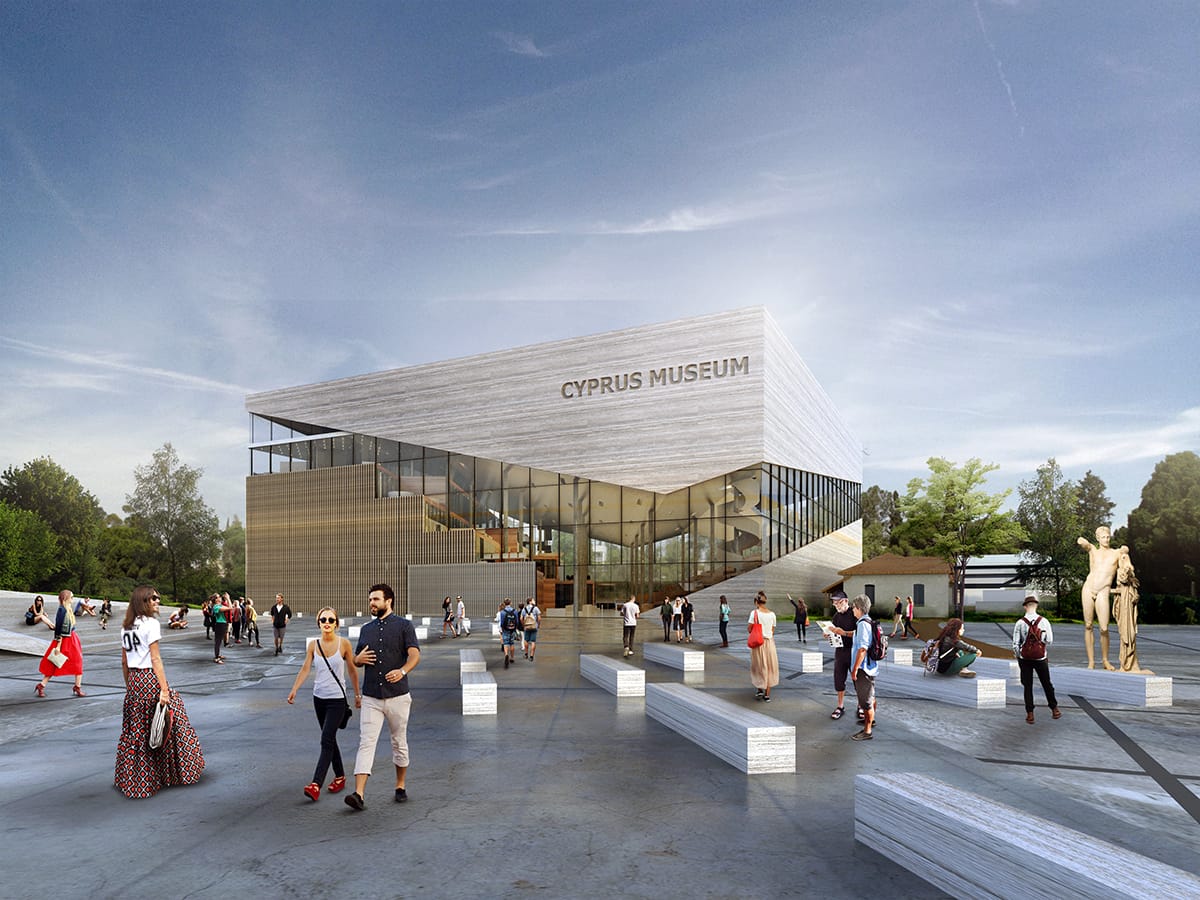
Exterior Frontal, @ Architects for Urbanity | Irgen Salianji, Marina Kounavi, Karolina Szóstkiewicz, Roxana Aron, Eugenio Cardoso
Cityscape
The site’s location adjacent to Nicosia’s most important cultural buildings and in between the old city’s Venetian walls and the Pedieos river create a dynamic context for the design decisions taken in the design of Cyprus Muse¬um. The potentials and the shape of the site, alongside its location, inspire a building typology that is free-standing and accessible all around – a pavilion in the park. The direct connection with the existing Cyprus Museum and the continuity to the municipal park on the North are the key elements for the urban alignment of the proposal. The building is positioning in the heart of the site as a central polarity that is surrounded by generous public and green spaces, as well as a series of open spaces for various cultural activities all around it. The volume is rotated in such a way that it can have clear alignments and relate to the house of the Representatives and the existing Cyprus Museum. As a result the building is standing be¬tween the urban and the natural realm, aiming to become an incubator of activities.
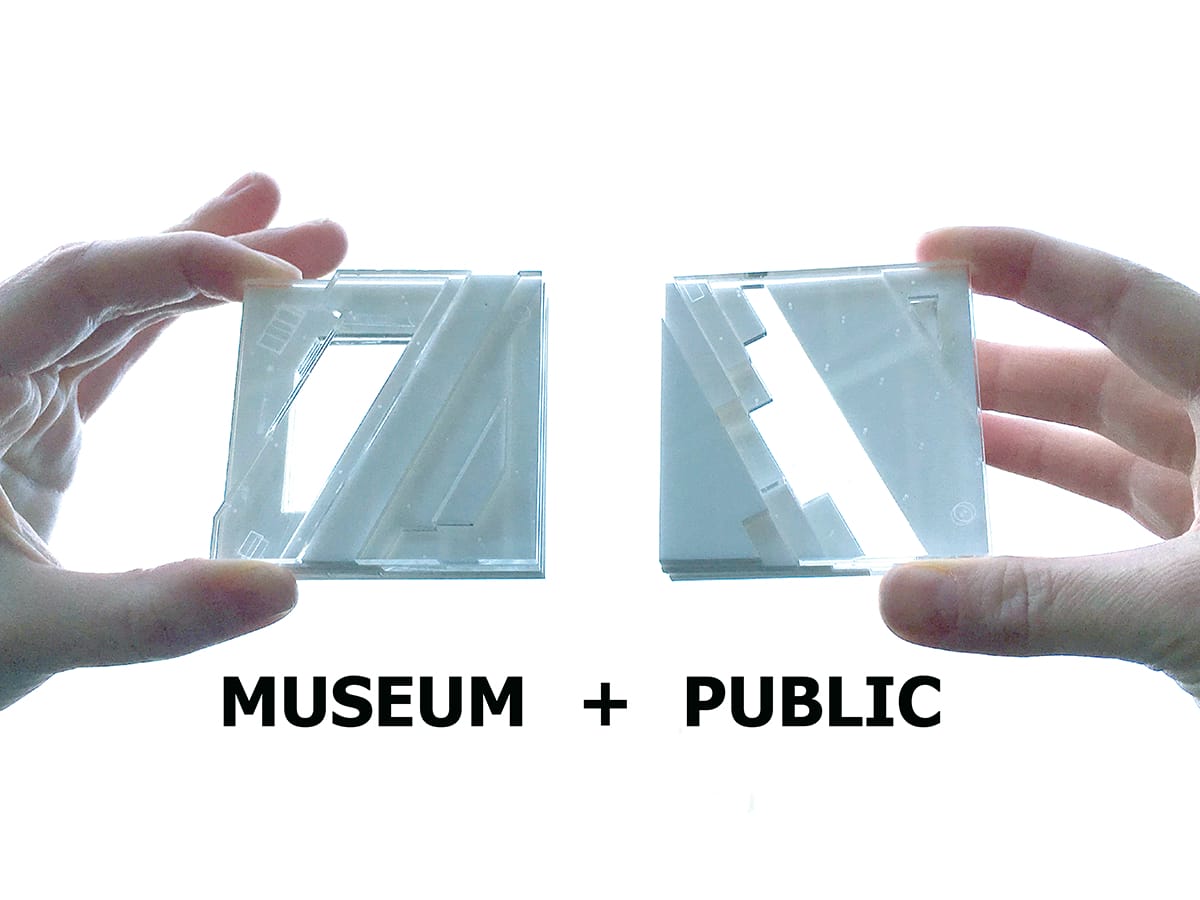
Concept, @ Architects for Urbanity | Irgen Salianji, Marina Kounavi, Karolina Szóstkiewicz, Roxana Aron, Eugenio Cardoso
Statement
Statistic surveys indicate that the majority of visitors in museums are mainly tourists and not people from the local community. This fact raises questions on the different facilities that the museums have to have in order to broaden the spectrum of visitors and being active cultural nodes of a city.
Cyprus is one of the oldest civilizations in the Aegean Sea that is dating back from 3900-2500 BC. Its collection is enormous and will attract people from all around the world. The New Cyprus Museum is aiming to be a meeting point for tourists, academics, students and archeologists in the Mediterranean Sea. The building has to meet the criteria of a contemporary archeological museum and its deign to be innovative in terms of new technologies, research of new curatorial approaches and facilities that could offer.
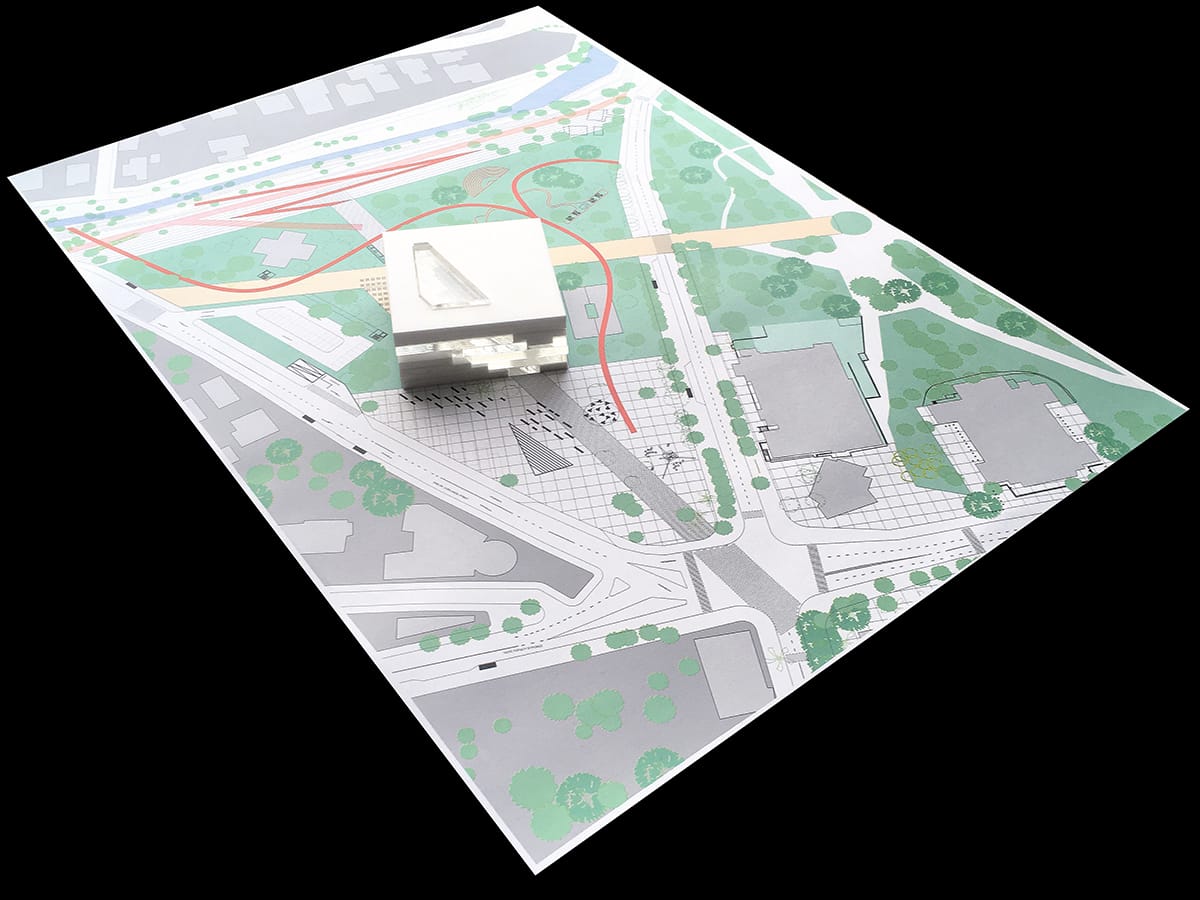
Model, @ Architects for Urbanity | Irgen Salianji, Marina Kounavi, Karolina Szóstkiewicz, Roxana Aron, Eugenio Cardoso
The museum acts as cultural hub that attracts people to meet, interact and socialize. On a second level, the museum functions as a tourist meeting point, where visitors meet and enjoy a relaxing time, checking out the really big permanent exhibition but also, temporary exhibits, drinking coffee and getting informed for the city’s attractions and happenings.
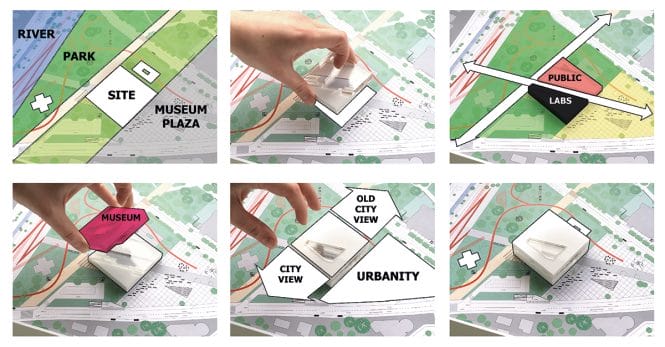
Concept Hands, @ Architects for Urbanity | Irgen Salianji, Marina Kounavi, Karolina Szóstkiewicz, Roxana Aron, Eugenio Cardoso
Concept
The ground based volume is shifted towards the Venetian Walls and the existent museum connecting them with Pedieos river and the extension of the municipal garden. The position of it is creating an urban passage that is the main entrance of the new Cyprus Museum. Subtracting the volume of the urban passage, we are creating a void that is a placeholder for all the interactive and public program of the building. In the same time the void separates the building into two different podiums that they serve separately public and restricted access functions. The exhibition is on the end of these two podiums working as a connector.
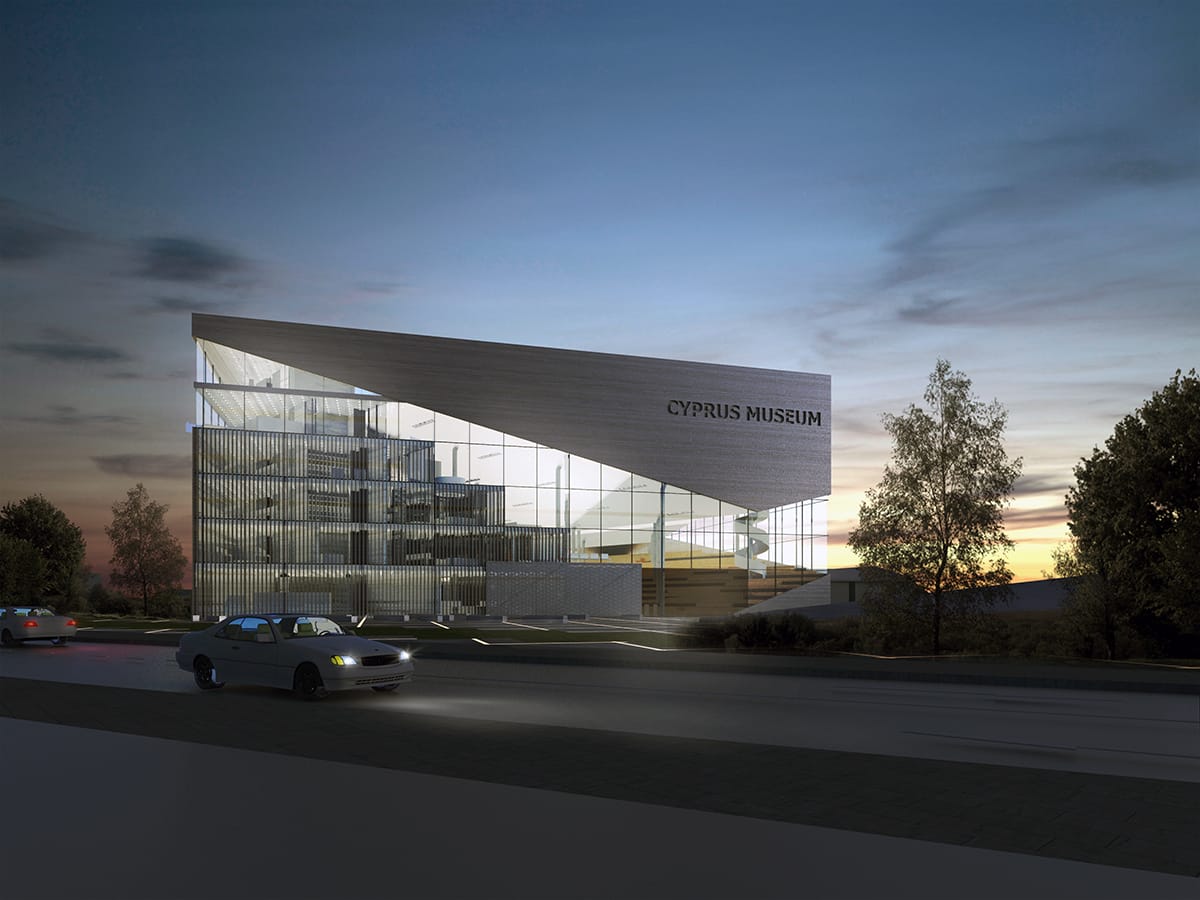
Exterior Dusk, @ Architects for Urbanity | Irgen Salianji, Marina Kounavi, Karolina Szóstkiewicz, Roxana Aron, Eugenio Cardoso
Exhibition
The lower part of the building is divided into two different podiums with independent access, program and circulation. On the northern podium, the temporary exhibition is located on a stepped continuous surface and a ramp that are creating both accessibility and dynamic exhibition spaces, proposing a different- more challenging curatorial structure. Such spatial arrangements motivate the visitor to meander around the exhibits and, on key moments, to observe a landscape of exhibits, as for example and array of sculptures. The proposal refers to the qualities of the cabinet of the curiosities (Kunstkammer) and the museum of Soane. In the same time, this surface is leading the visitor to the upper two floors of the permanent exhibition.
The permanent exhibition is located on the top floor and is a well defined rectangular and flexible space with indirect controlled lighting from the roof. The floor-plan allows for multiple exhibition layouts and performs as a generic background for the archaeological exhibits to stand out. The design is based on a series of pivoting walls that are mounted on the columns, providing the curators with the possibility to easily change the space according to the needs of the exhibition.

museum timeline, @ Architects for Urbanity | Irgen Salianji, Marina Kounavi, Karolina Szóstkiewicz, Roxana Aron, Eugenio Cardoso
Organization
The museum is designed as an open programmatic condenser featuring a large urban room in the heart of it, a generous space of gathering for the visitors and a challenging ground for curators to exhibit archaeology in an open and non linear format that has been previously unforeseen. The void is connecting the city with the permanent exhibition space on the top floor through a series of large and monumental stairs, ramps and stepped interior landscapes on which visitors can also seat, use and celebrate. As the implementation of the building program includes two different phases of construction, we proposed the creation of three different buildings of different scales and architectural language: the box-shaped large museum building, the cross-shaped building that will house the department of antiquities and the library building, to be housed inside the renovated and extended existing building.
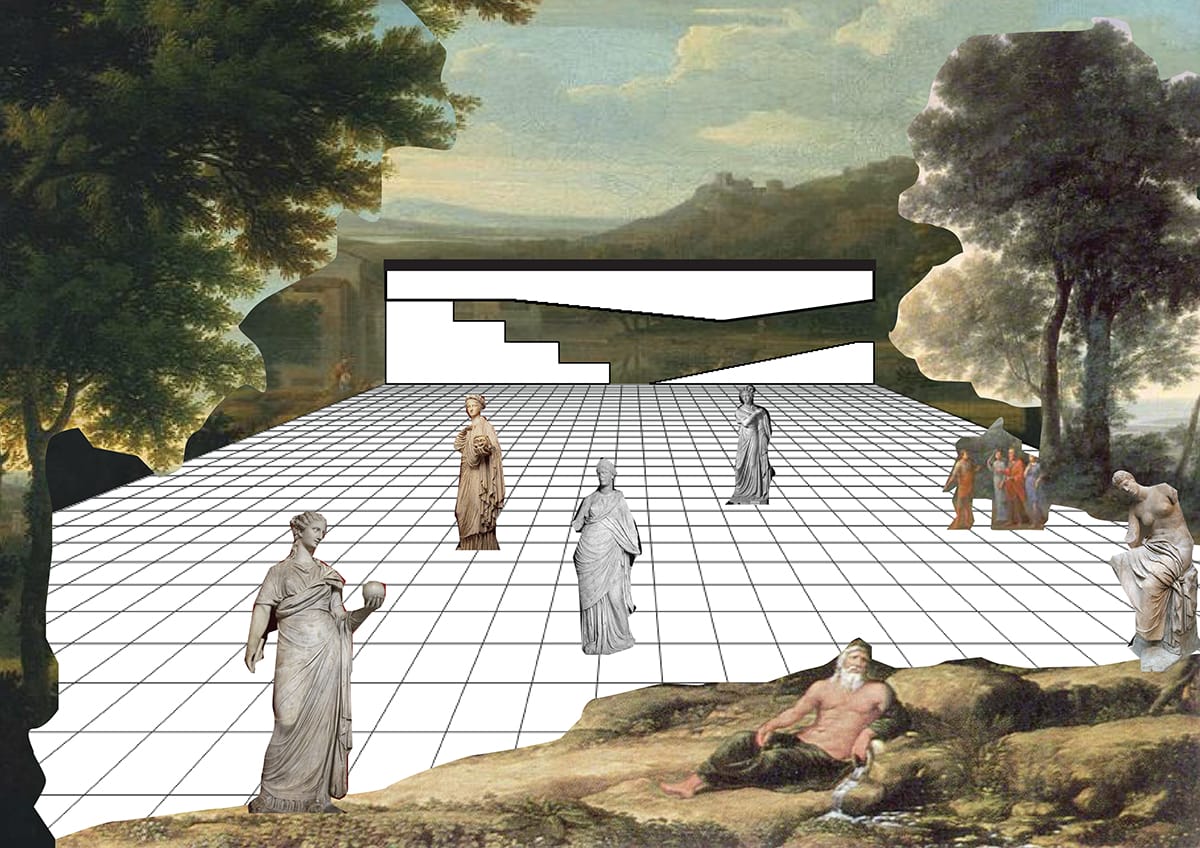
Void_Programmatic section, @ Architects for Urbanity | Irgen Salianji, Marina Kounavi, Karolina Szóstkiewicz, Roxana Aron, Eugenio Cardoso
The lower part of the building is divided into two different podiums with independent access, program and circulation. The Southern podium is housing the visitor’s amenities and services on the ground floor, the laboratories on the three levels above and the administration on the fifth floor. It is also connected with the storerooms that are located in the basement of the building through a large circulation core and freight elevator. This podium is steep and creates different platforms on which the employees could hang out while being at work. In the same time, the visitors are able to see the process that is going on at the laboratories without having access to it. The Northern podium serves the educational part of the program and on its surface, a part of the temporary exhibition of the museum is located. A stepped continuous surface and a ramp are creating both accessibility and dynamic exhibition spaces, proposing a different- more challenging curatorial structure. Such spatial arrangements motivate the visitor to meander around the exhibits and, on key moments, to observe a continuous landscape of exhibits.
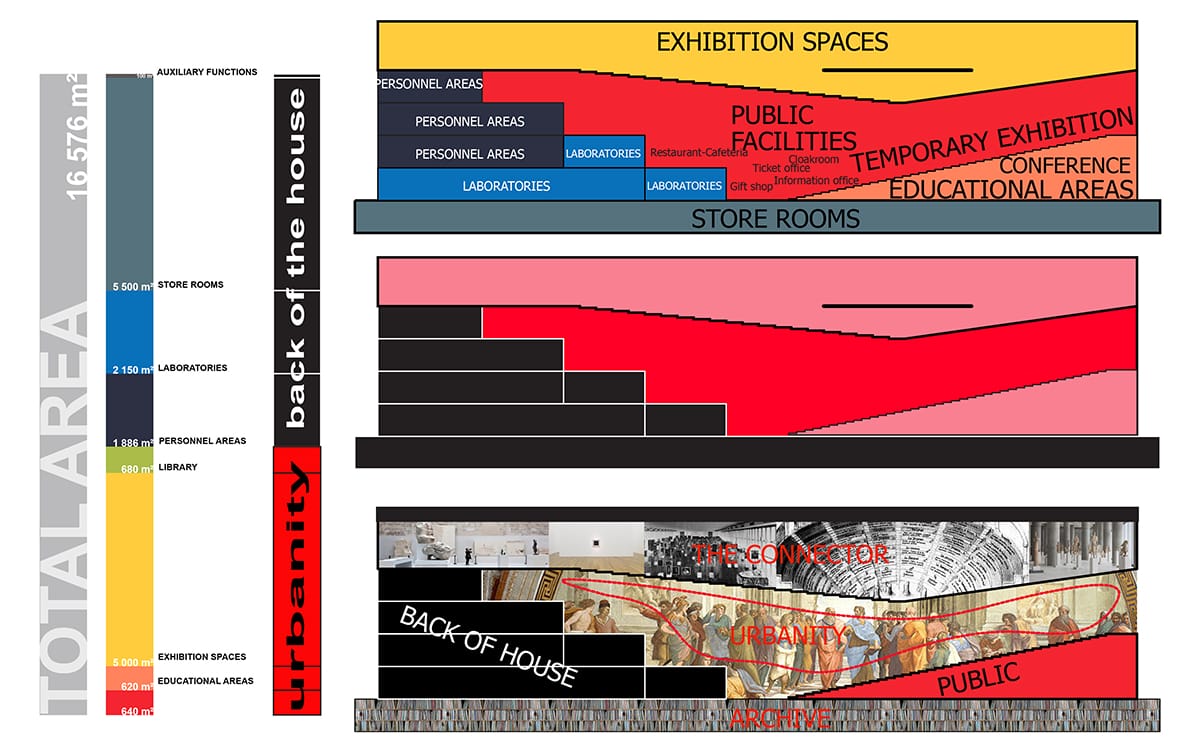
Void_Programmatic, @ Architects for Urbanity | Irgen Salianji, Marina Kounavi, Karolina Szóstkiewicz, Roxana Aron, Eugenio Cardoso
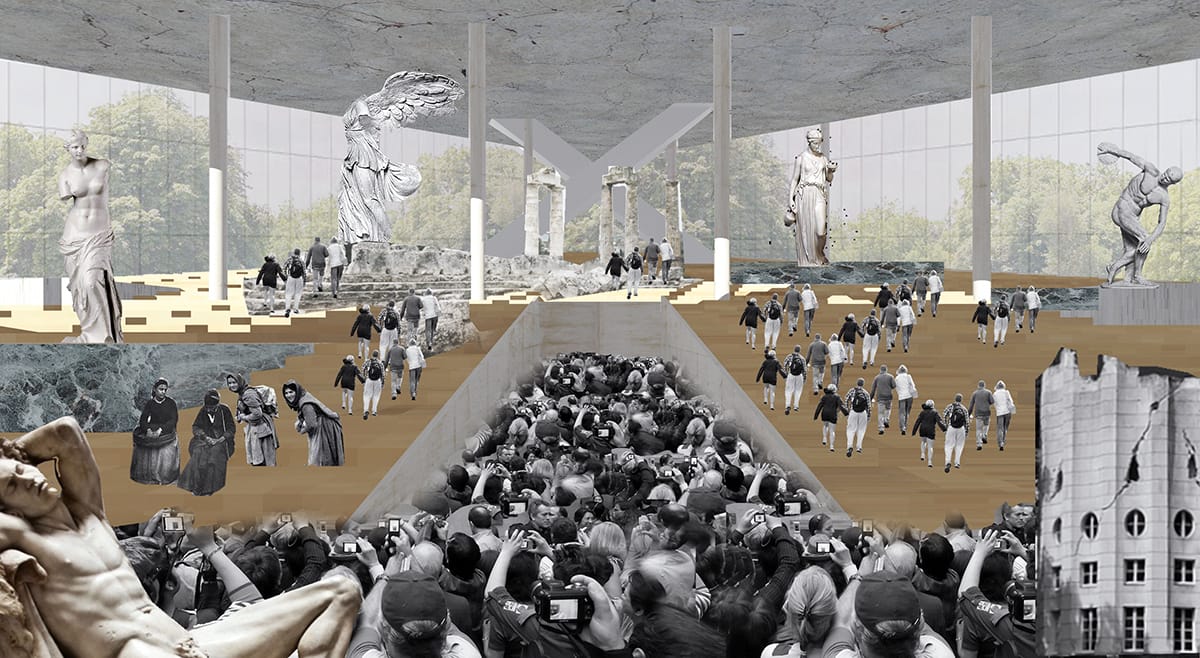
exhibition atrium, @ Architects for Urbanity | Irgen Salianji, Marina Kounavi, Karolina Szóstkiewicz, Roxana Aron, Eugenio Cardoso
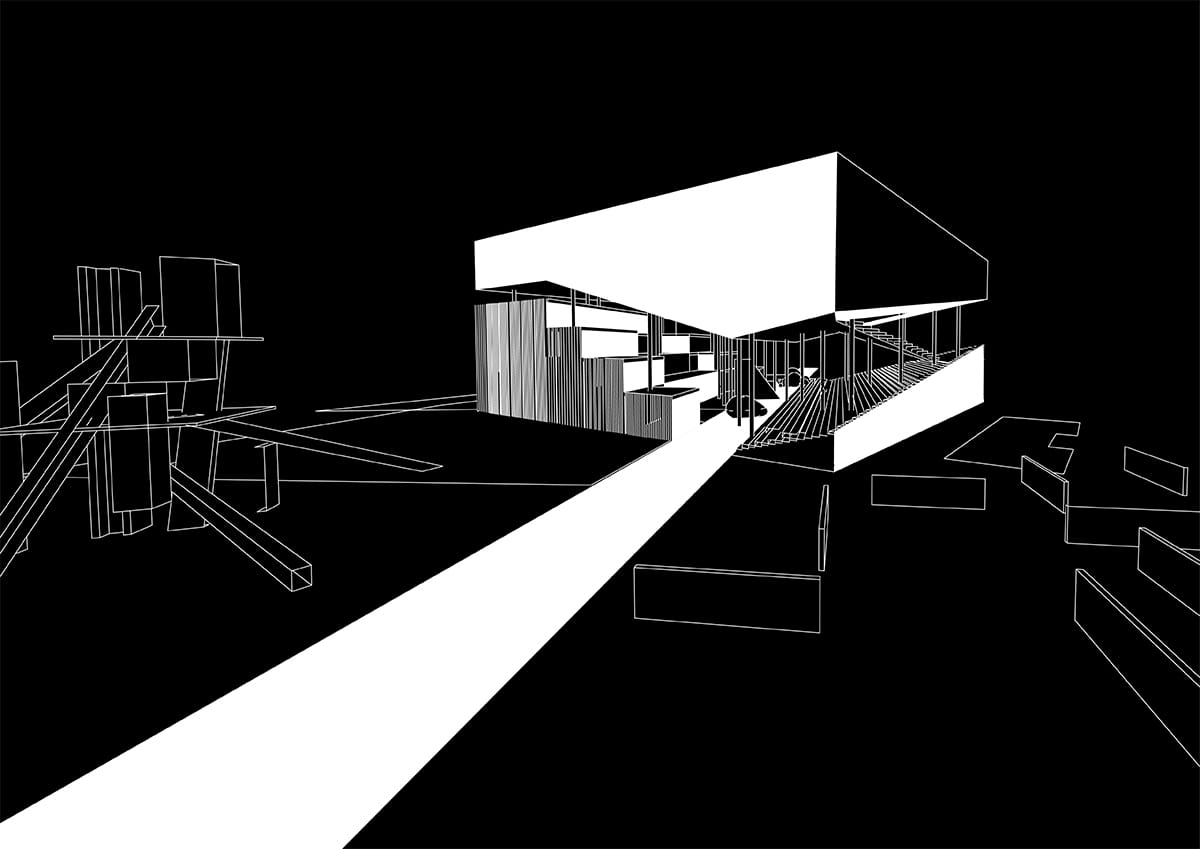
Front Façade, @ Architects for Urbanity | Irgen Salianji, Marina Kounavi, Karolina Szóstkiewicz, Roxana Aron, Eugenio Cardoso
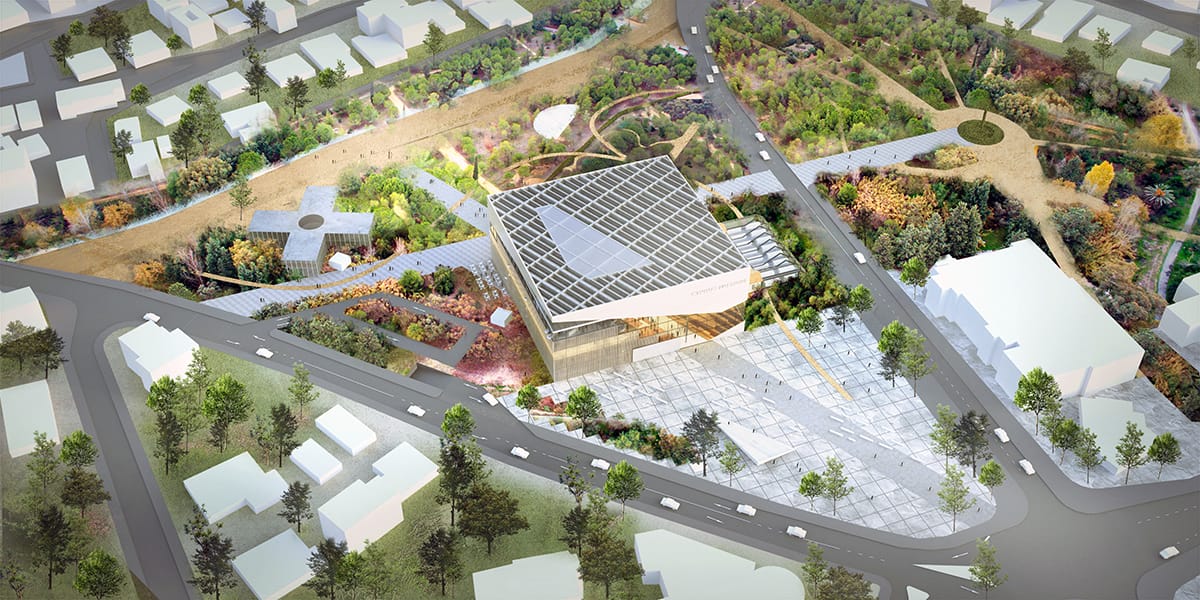
Bird Eye View, @ Architects for Urbanity | Irgen Salianji, Marina Kounavi, Karolina Szóstkiewicz, Roxana Aron, Eugenio Cardoso
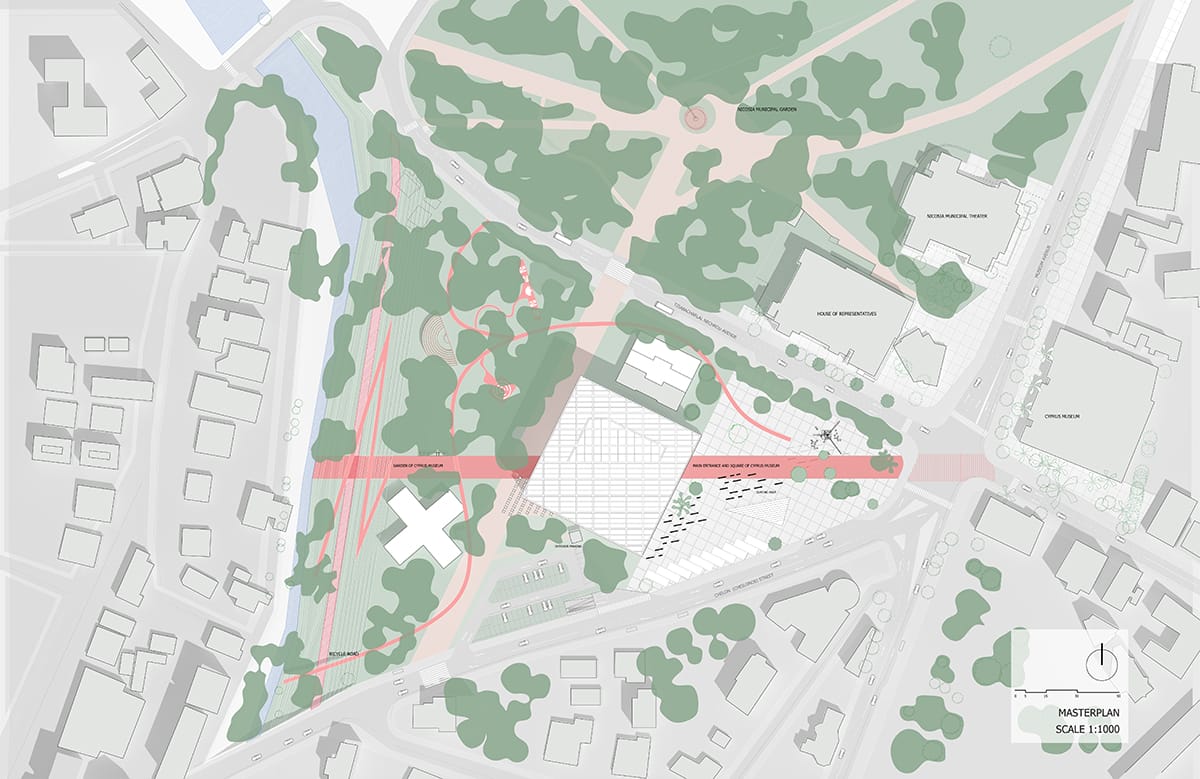
Masterplan, @ Architects for Urbanity | Irgen Salianji, Marina Kounavi, Karolina Szóstkiewicz, Roxana Aron, Eugenio Cardoso
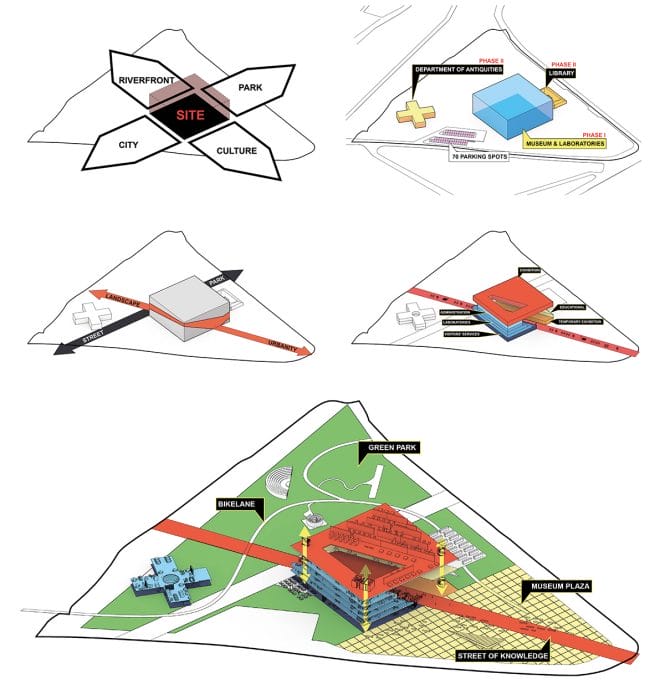
Concept Diagrams, @ Architects for Urbanity | Irgen Salianji, Marina Kounavi, Karolina Szóstkiewicz, Roxana Aron, Eugenio Cardoso
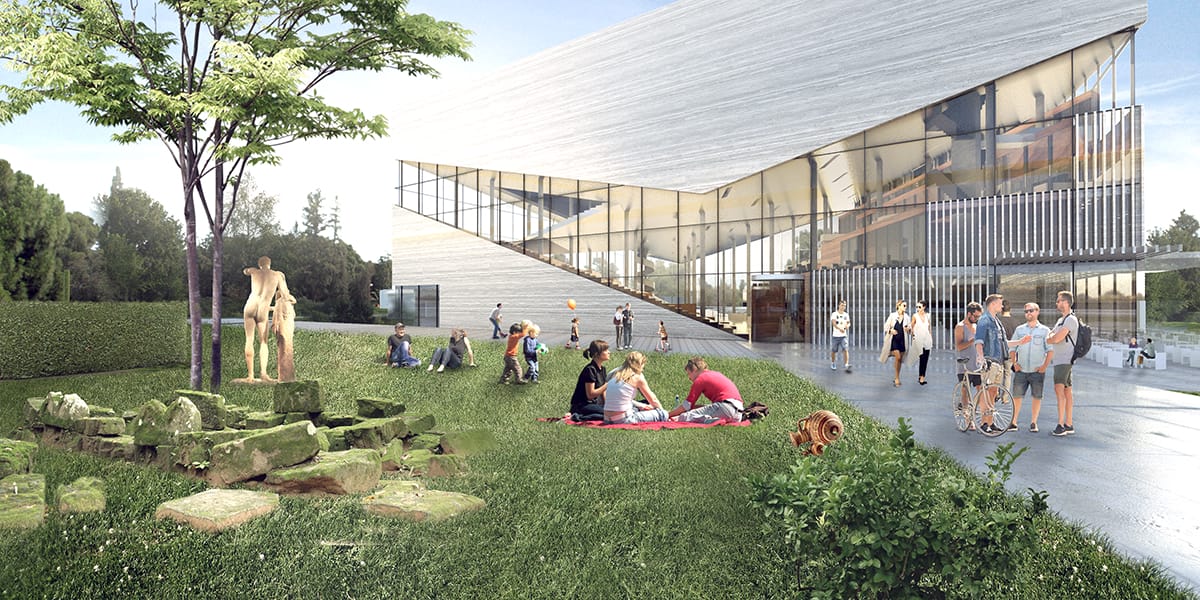
Exterior from Park, @ Architects for Urbanity | Irgen Salianji, Marina Kounavi, Karolina Szóstkiewicz, Roxana Aron, Eugenio Cardoso
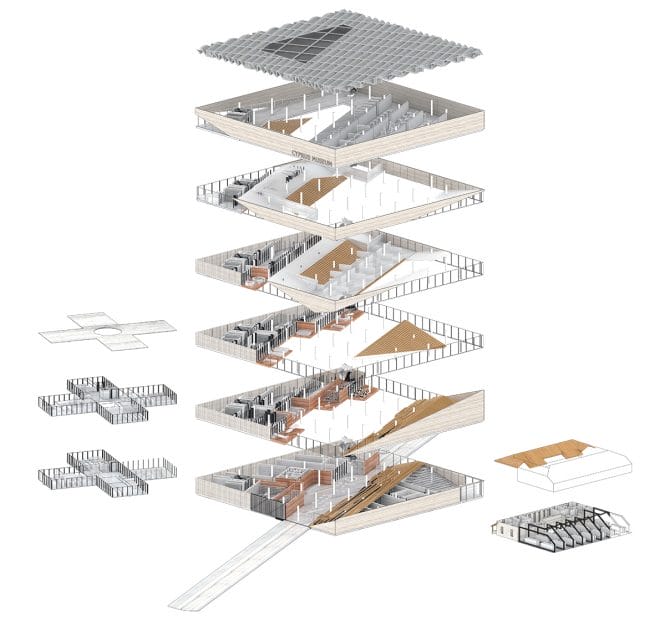
Exploded Axonometric, @Architects for Urbanity | Irgen Salianji, Marina Kounavi, Karolina Szóstkiewicz, Roxana Aron, Eugenio Cardoso
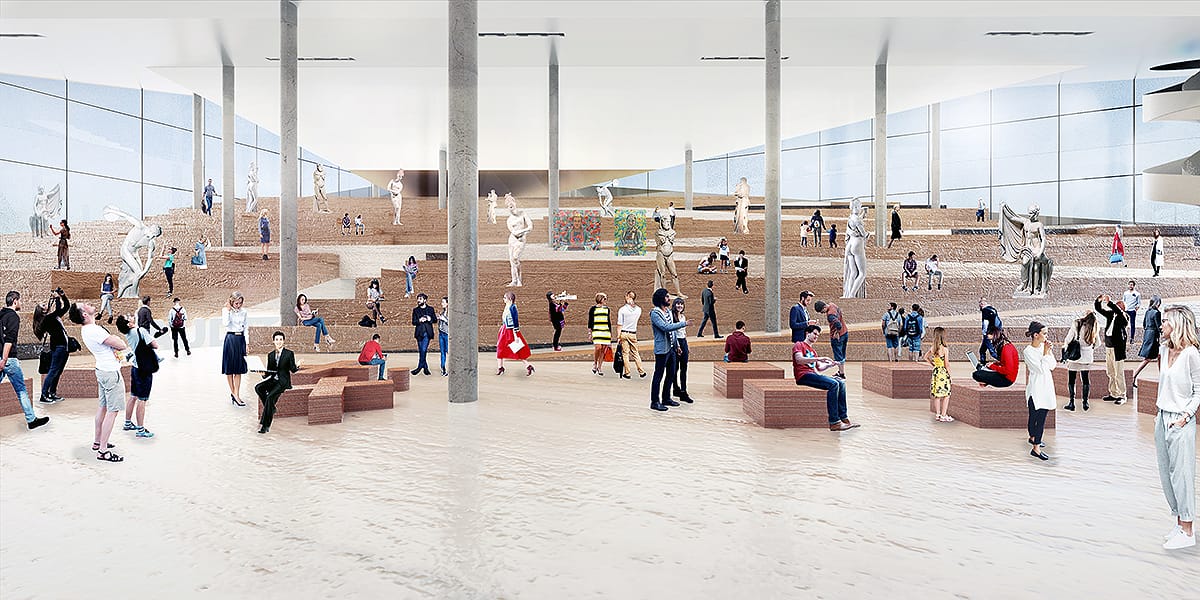
Interior Podium, @ Architects for Urbanity | Irgen Salianji, Marina Kounavi, Karolina Szóstkiewicz, Roxana Aron, Eugenio Cardoso
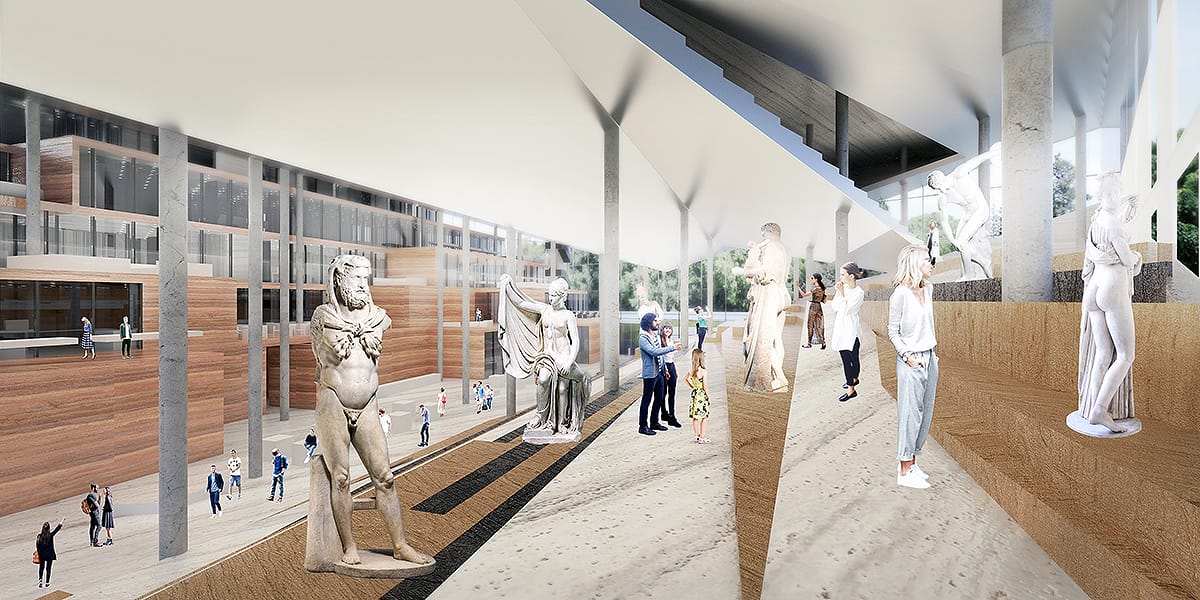
Interior Void, @ Architects for Urbanity | Irgen Salianji, Marina Kounavi, Karolina Szóstkiewicz, Roxana Aron, Eugenio Cardoso
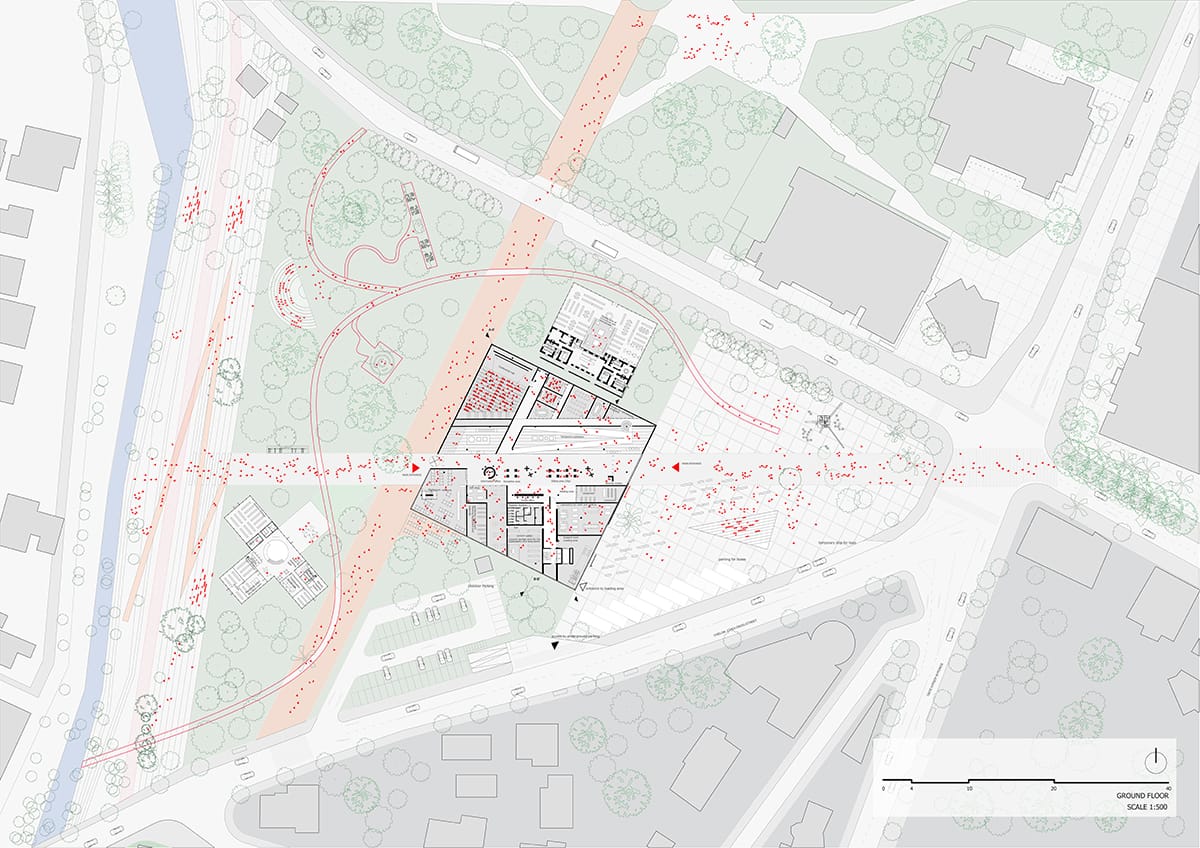
site plan, @ Architects for Urbanity | Irgen Salianji, Marina Kounavi, Karolina Szóstkiewicz, Roxana Aron, Eugenio Cardoso
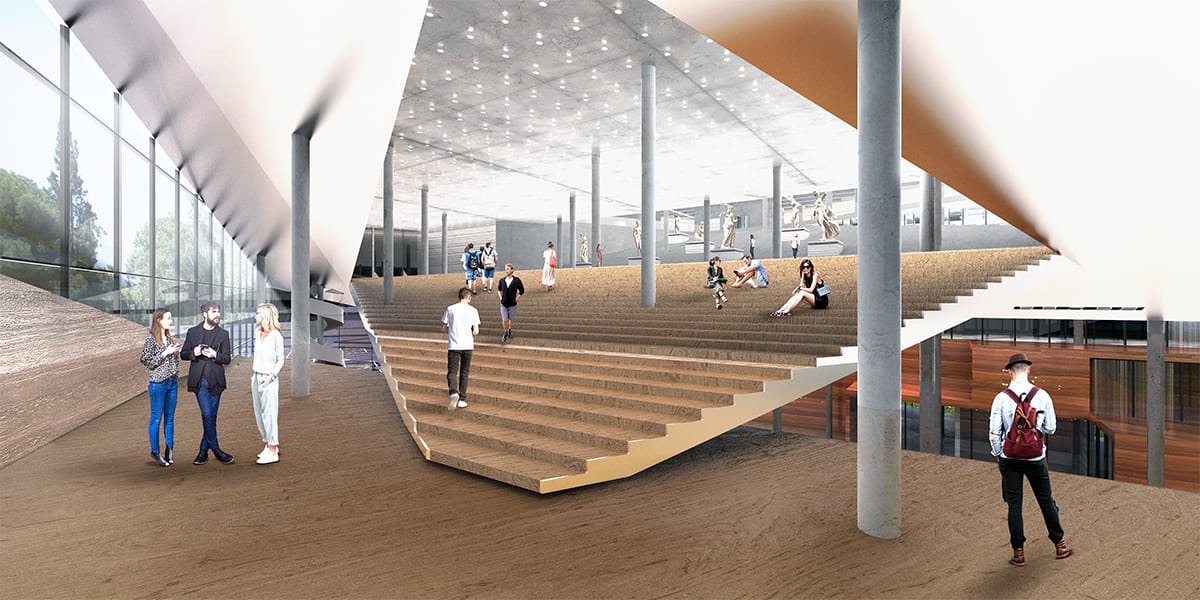
Interior Stairs, @ Architects for Urbanity | Irgen Salianji, Marina Kounavi, Karolina Szóstkiewicz, Roxana Aron, Eugenio Cardoso
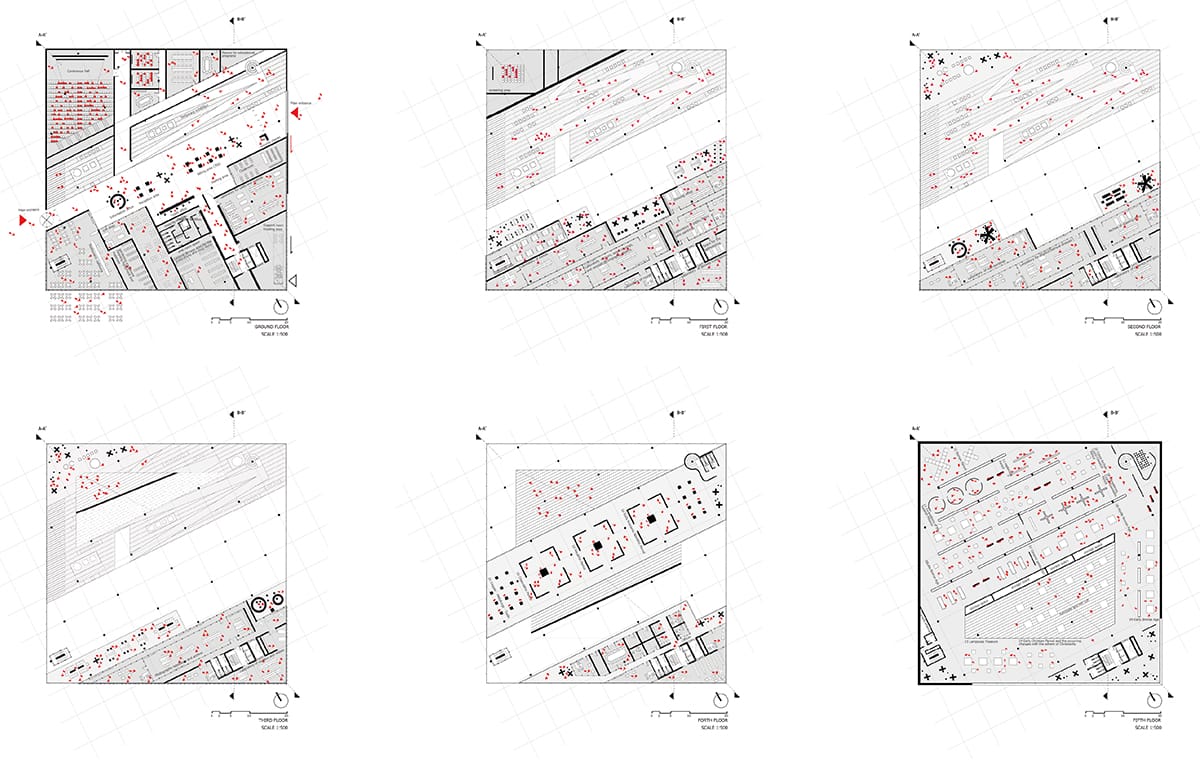
Floor Plans, @ Architects for Urbanity | Irgen Salianji, Marina Kounavi, Karolina Szóstkiewicz, Roxana Aron, Eugenio Cardoso
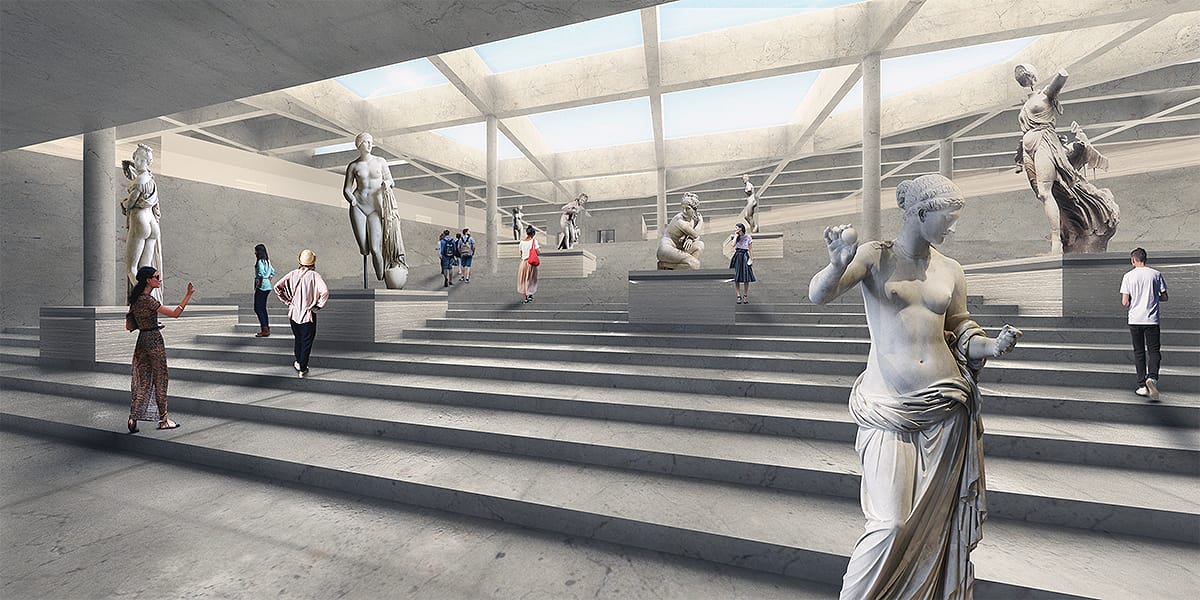
Interior Exhibition, @ Architects for Urbanity | Irgen Salianji, Marina Kounavi, Karolina Szóstkiewicz, Roxana Aron, Eugenio Cardoso

Exhibitions Flexibility, @ Architects for Urbanity | Irgen Salianji, Marina Kounavi, Karolina Szóstkiewicz, Roxana Aron, Eugenio Cardoso
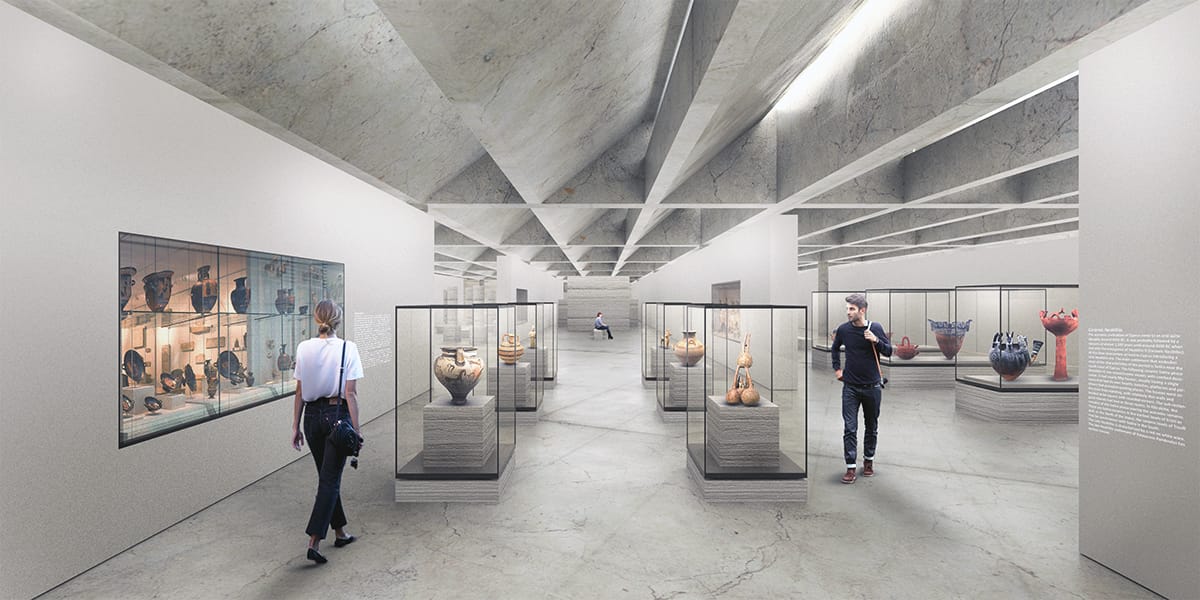
Interior Exhibition, @ Architects for Urbanity | Irgen Salianji, Marina Kounavi, Karolina Szóstkiewicz, Roxana Aron, Eugenio Cardoso
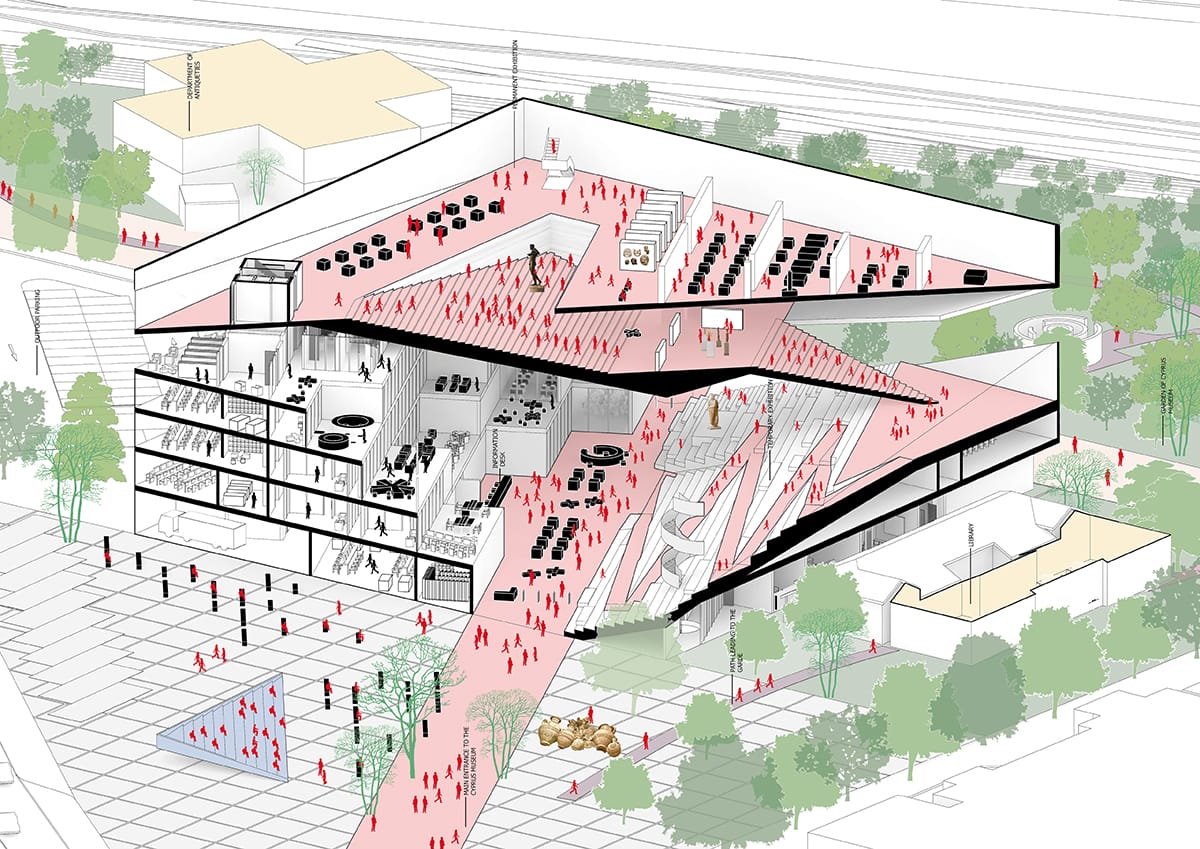
Axonometric section, @ Architects for Urbanity | Irgen Salianji, Marina Kounavi, Karolina Szóstkiewicz, Roxana Aron, Eugenio Cardoso
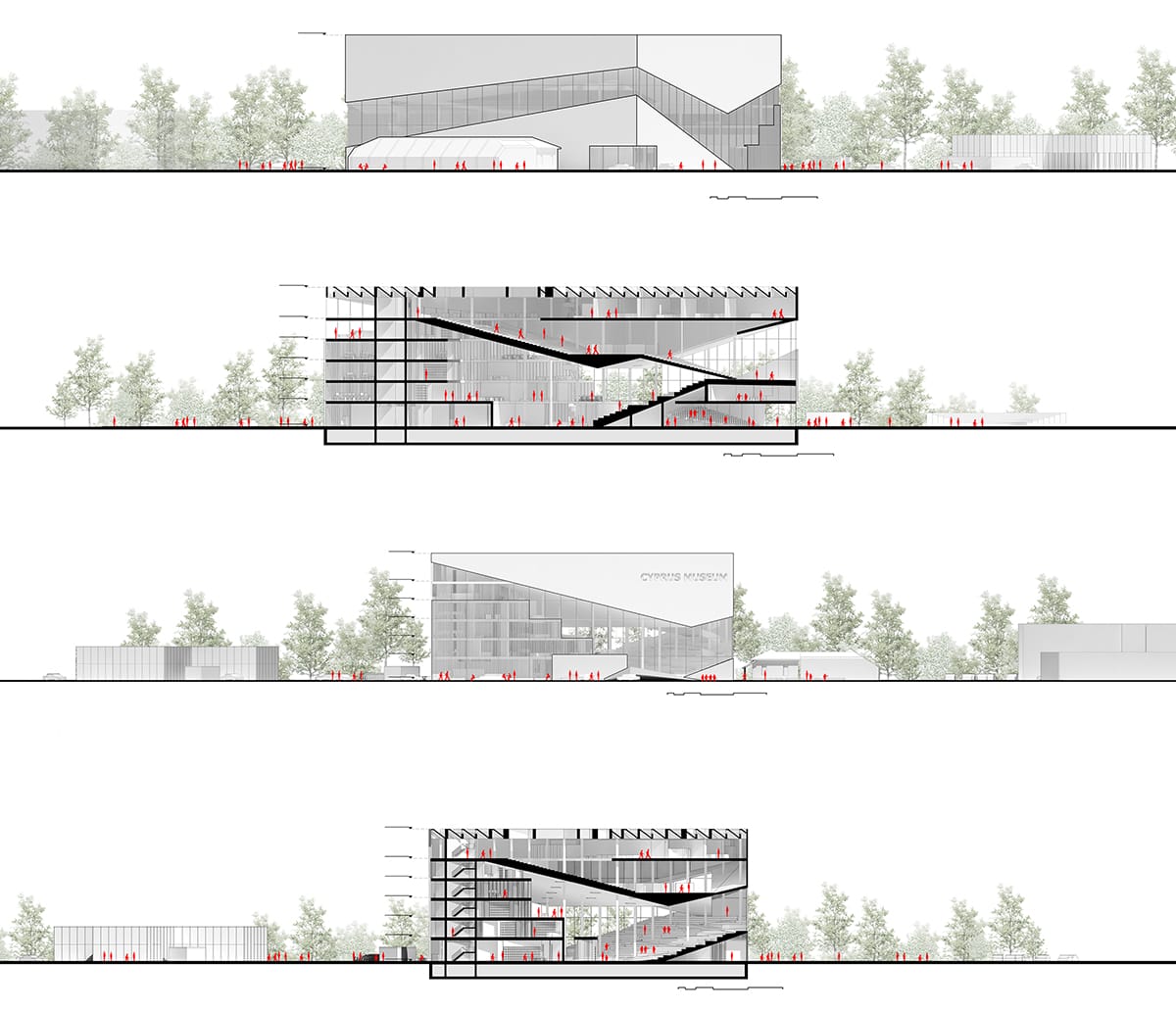
Sections / Elevations, @ Architects for Urbanity | Irgen Salianji, Marina Kounavi, Karolina Szóstkiewicz, Roxana Aron, Eugenio Cardoso
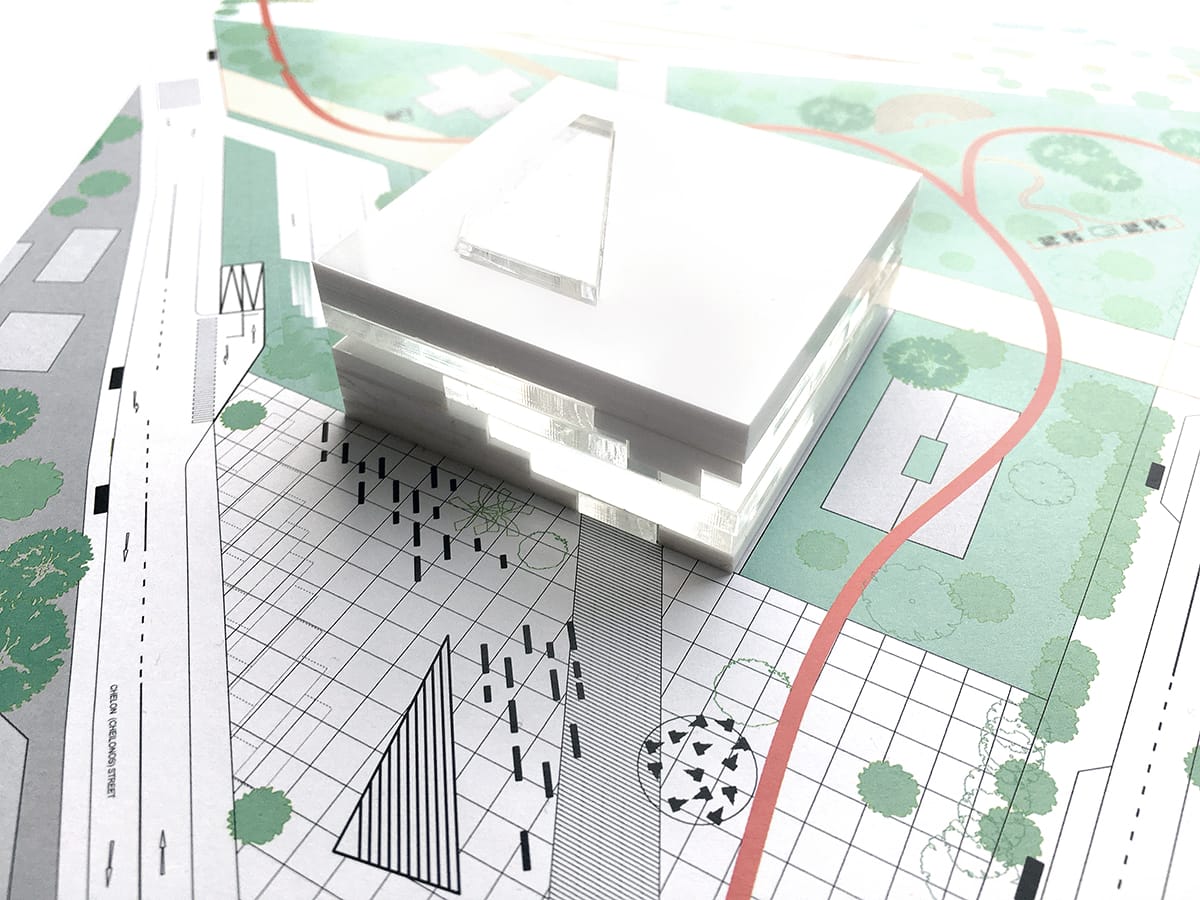
Model, @ Architects for Urbanity | Irgen Salianji, Marina Kounavi, Karolina Szóstkiewicz, Roxana Aron, Eugenio Cardoso
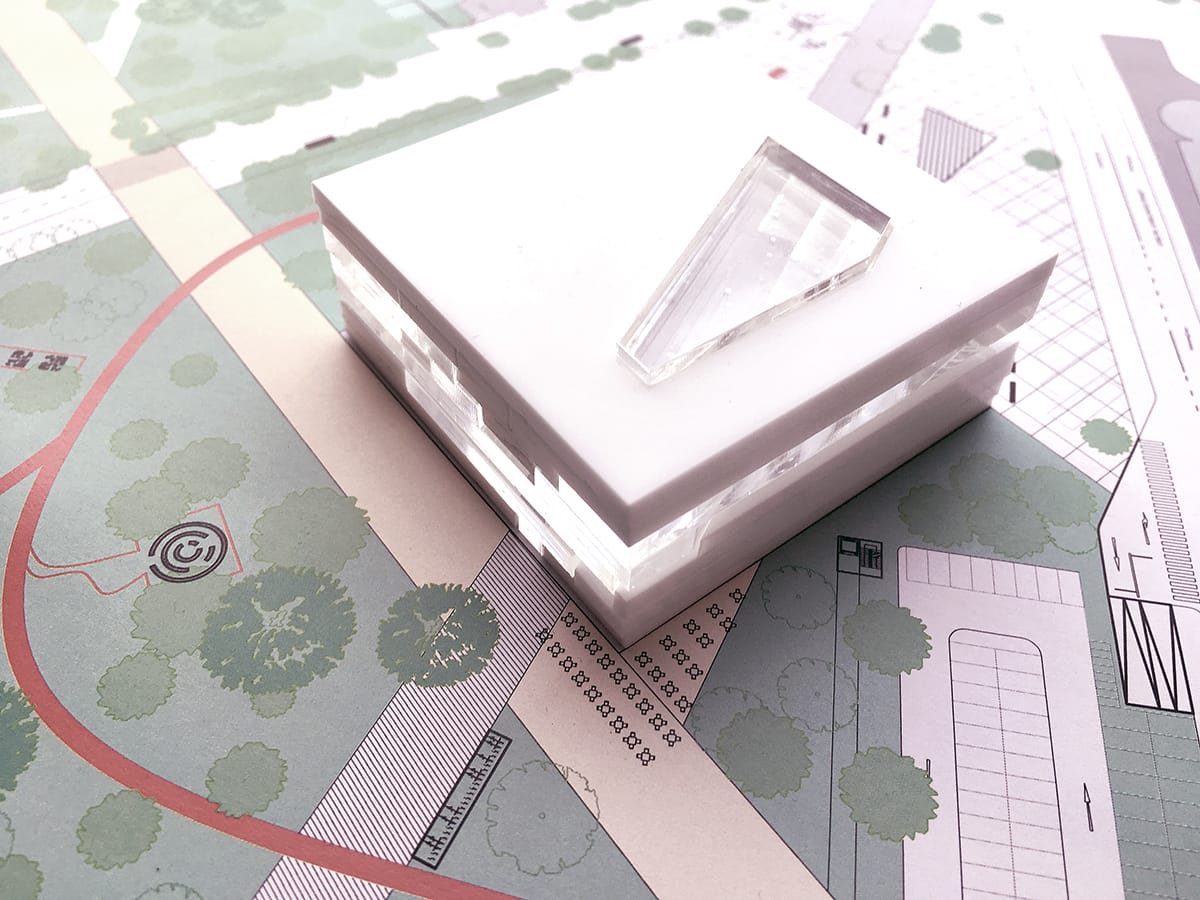
Model, @ Architects for Urbanity | Irgen Salianji, Marina Kounavi, Karolina Szóstkiewicz, Roxana Aron, Eugenio Cardoso


